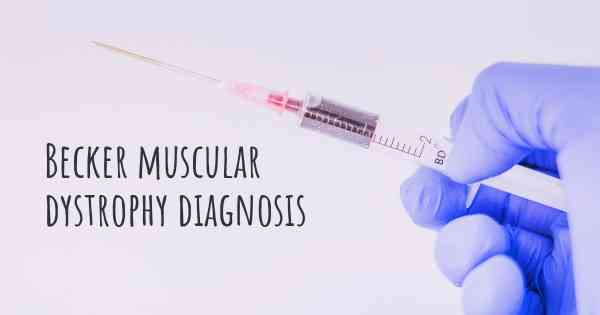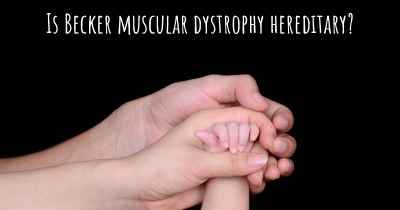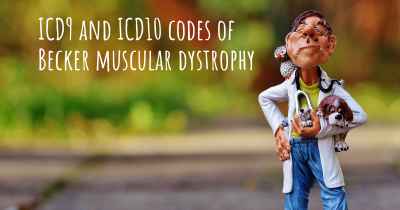4
How is Becker muscular dystrophy diagnosed?
See how Becker muscular dystrophy is diagnosed. Which specialists are essential to meet, what tests are needed and other useful information for the diagnosis of Becker muscular dystrophy

Translated from spanish
Improve translation
Diagnosed with these tests from a neurologist:
-Biopsy: caregivers remove a small tissue sample of one of their muscles and will be sent to the laboratory for examination.
-Telemetry is the continuous monitoring of your heart rate. Adhesive patches placed on your skin connect to an electrocardiograph (EKG or ECG) records the heart rhythm.
- Electromyography (EMG): This is also known as an EMG. An EMG is done to check the function of your muscles and the nerves that control them. Are placed electrodes (wires) on the area of the muscle that is going to be revised. Needles that enter your skin may be attached to the electrode. It measures the electrical activity of your muscles and nerves by a machine attached to the electrode. Your muscles are reviewed during rest and with activity.
-Genetic test: This test provides genetic information to see if, a hereditary disease, it is the one that is causing the problem.
-Magnetic resonance imaging: This test is also known with the acronym IRM. During the mri, pictures are taken of your muscles. Physicians use these images to determine if there are changes in the muscles...
-Biopsy: caregivers remove a small tissue sample of one of their muscles and will be sent to the laboratory for examination.
-Telemetry is the continuous monitoring of your heart rate. Adhesive patches placed on your skin connect to an electrocardiograph (EKG or ECG) records the heart rhythm.
- Electromyography (EMG): This is also known as an EMG. An EMG is done to check the function of your muscles and the nerves that control them. Are placed electrodes (wires) on the area of the muscle that is going to be revised. Needles that enter your skin may be attached to the electrode. It measures the electrical activity of your muscles and nerves by a machine attached to the electrode. Your muscles are reviewed during rest and with activity.
-Genetic test: This test provides genetic information to see if, a hereditary disease, it is the one that is causing the problem.
-Magnetic resonance imaging: This test is also known with the acronym IRM. During the mri, pictures are taken of your muscles. Physicians use these images to determine if there are changes in the muscles...
Posted May 1, 2017 by NeEssy 1000








